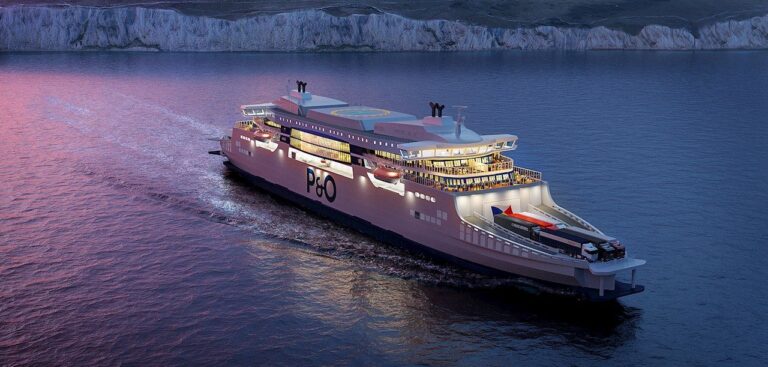Ferry and cruise line P&O’s next generation of vessels set to ply the English Channel will feature a hybrid propulsion system supplied by ABB.
They will be built by Guangzhou Shipyard International and be powered by a combination of 8.8MWh batteries and diesel generators, which the operator hopes will cut fuel consumption by around 40% compared with P&O’s current Dover-Calais crossing. Initially, the batteries will provide maneuvering power in port, but P&O hopes that once shore charging facilities come online, complete zero-emissions crossing will be possible.
The shipping line currently has two vessels on order, both of which will be equipped with ABB’s Azipod propulsion units, with four per vessel, rated at 7.5MW each. The boats’ diesel engines will also feature a two-stage turbocharging system that should further improve power efficiency and help achieve up to 5% in fuel savings (compared with current engines), while also reducing NOx emissions.
“The P&O ferries under construction at the Guangzhou Shipyard International are truly iconic. We are delighted to strengthen our strategic cooperation with the technology leader ABB and to work together on this leading-edge project, considering ABB’s proven supplier status in the global ferry market,” said Zhongqian Chen, chairman of Guangzhou Shipyard International.
Built to a double-ended design, the ferries will feature a pair of propulsion units and a bridge at each end, meaning there will be no need to turn the ships in port. The captain and senior officers will simply walk to the opposite bridge, saving an estimated seven minutes on each outbound and return journey and one ton of fuel – a sixth of what is used on the 21-mile crossing.
The vessels will also be equipped with ABB’s Ability Marine Pilot Control, an intelligent maneuvering and control system that the company says enables safer, more efficient operations by automating some navigational tasks to allow bridge officers to focus on optimizing overall ship control and positioning.



